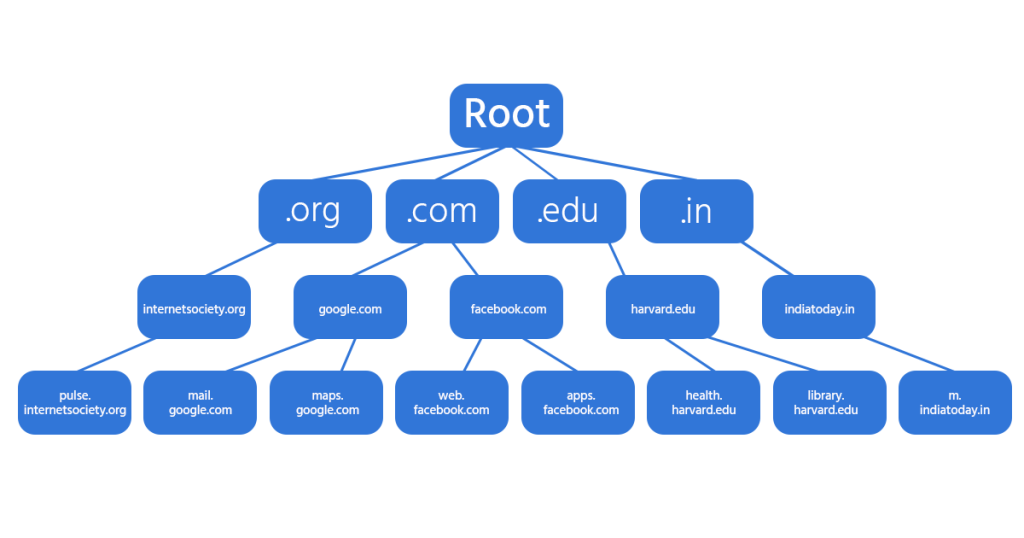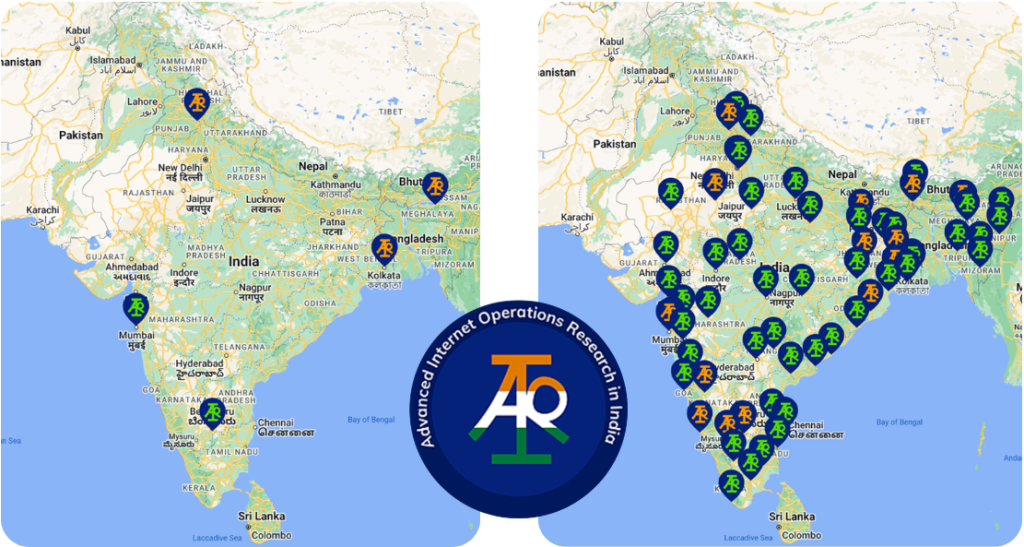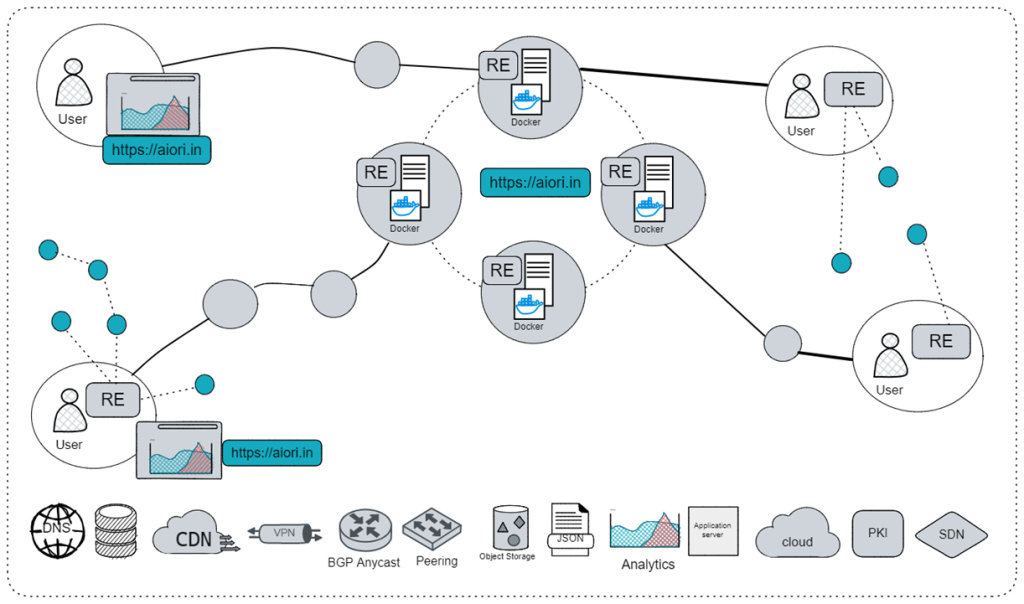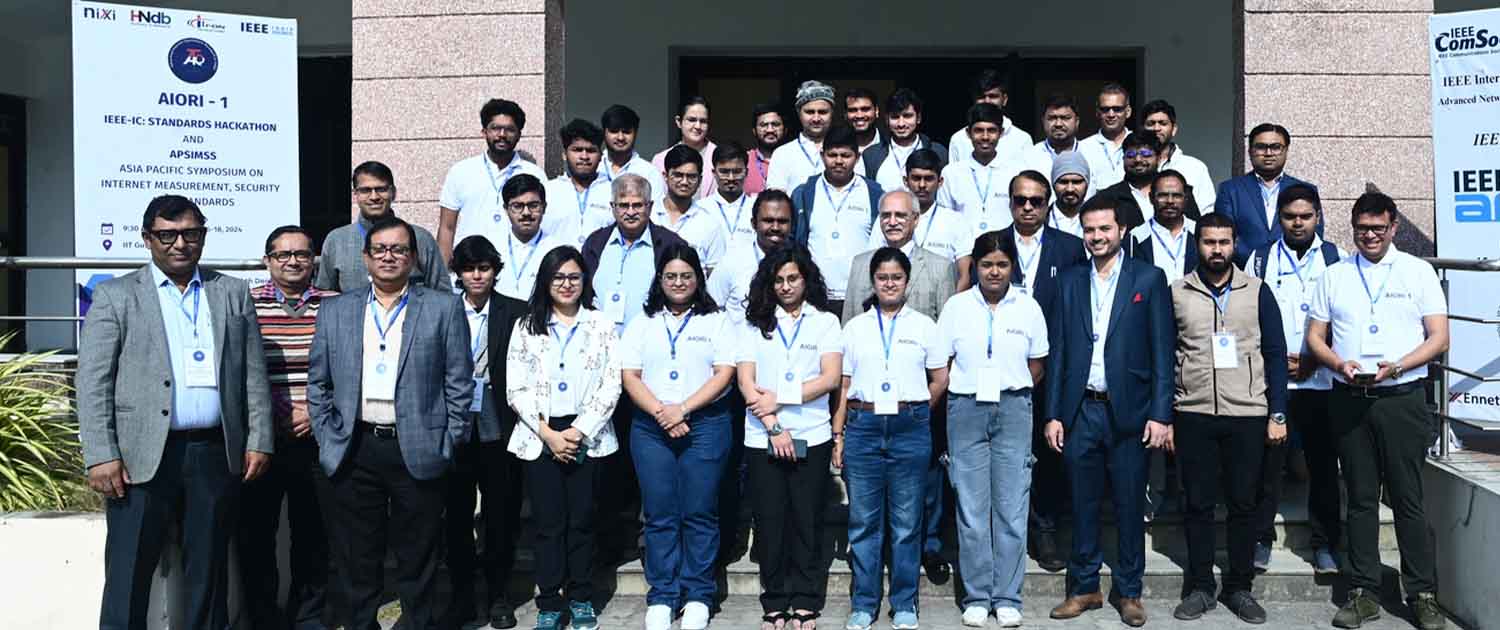- The Advanced Internet Operations Research in India Internet Measurement Network (AIORI-IMN) aims to evaluate and enhance Internet operations across India.
- Since 2021, the program has deployed five anycast instances and 100 measurement devices, referred to as anchors, with plans to scale up to 1,500 units.
- The underlying system is open-source, allowing other countries to create their own indigenous Internet measurement system.
In 2009, I was a Senior Software Consultant working on e-governance projects in the West Bengal region of India. One of our objectives was migrating e-governance projects from IPv4 to IPv6.
At the time, only one in 20 people were using the Internet in India (compared to one in four globally), and IPv6 transmitted less than 1% of global Internet traffic. However, the government realized that their infrastructure and services needed to be ready for future demand.
Figure 1 — The percentage of Internet users globally and in India (2009-2020). Source: World Bank.
As a software developer, I had no experience with networking, so I attended an IPv6 workshop organized by the Internet Society Kolkata Chapter, which I joined shortly after.
Over the coming year, I and other chapter volunteers, including Anupam Agrawal (past chair of Internet Society Kolkata Chapter), Sushanta Sinha, and Dr. Indrajit De, sought to understand various stakeholder’s perspectives on the strengths and weaknesses of the Internet in the region. One perceived weakness continually arising in discussions was a lack of Domain Name System (DNS) root servers in India — Kolkata had none at the time.

When you search for a website, your router will consult (query) the nearest root server first to find out how to connect your device to the device/server serving information for that website. Root servers don’t know the precise way to connect you, but they filter the ways based on the end of the address, for example, .org, .com, .edu, or, in the case of India, .in.
When we consulted DNS experts about this, they said there wasn’t a great need for more root servers in India, particularly not in Kolkata — they estimated it would only receive 200-300 queries per second. Root servers globally receive around 1 million queries a second.
Still, we wanted to understand the process of running a root server and test whether it would affect local traffic latency and resilience. We successfully approached ICANN about hosting an L-Root server (13 different types of root servers named from A to M).
We started with a 2MB link, which quickly became choked with traffic. We realized this was because we were not just serving queries originating from Kolkata but queries from everywhere between the next closest L-Root server in Singapore, almost 3,000km away!
With the help of local ISPs, we increased this link to 20MB and discovered that we were receiving around 1,000-2,000 queries per second — nearly 10 times more than the original estimates.
From this experience, we realized we needed to improve our understanding of Internet usage (routing and peering) in India instead of relying on assumptions from outside the country.
This culminated in a pilot project that the Indian government funded to develop an indigenous Internet Measurement Network (IMN) for India under the Advanced Internet Operations Research in India (AIORI) initiative.
Developing a Measuring Network and Community
The AIORI-IMN project, supported by the Ministry of Electronics & Information Technology (MeitY) and NIXI and implemented by IIFON (India Internet Foundation), aims to evaluate and enhance Internet operations across India.
Since 2021, the program has deployed five anycast instances and 100 measurement devices, referred to as anchors, with plans to scale up to 1,500 units.

These components enable real-time monitoring, traffic analysis, and network diagnostics, ensuring optimal performance and security and enabling precise and data-driven decision-making. Read use case scenarios in our paper, “The Internet Measurement Network (AIORI-IMN).”

The platform has also been developed to be highly interoperable, modular, and API compatible, making it an easy-to-use testbed for new standards development. One example is how hackathon participants implement IETF RFC 9606 and 941 using the platform.
This community collaboration and use is a core outcome of the project. We currently have over 180 registered users who are given credits for hosting anchors, which they can redeem to run tests.
We have also sought to make the system open-sourced so that any network operator can view and create their own measurements and replicate them to expand the system. If you’d like to learn more, please email us — we’re keen to share our experience and expand the project.
Strengthen the DNS’s Resilience
Under this project, we signed a memorandum of understanding with ICANN to set up L-Root instances in four other locations to further understand the traffic dynamics. These L-root instances service 10,000-12,000 queries per second, 10% of the total number of queries that L-root handles worldwide!
We are also continually evaluating the performance of all DNS Root Server in India.
Another objective of this project was to understand the stress these root servers can cope with during a disaster. Working with ICANN, we stopped three of the four root servers deployed as part of the AIORI initiative to measure the effect on traffic — whether it reroutes to the remaining L-Root server in India or abroad.
A significant outcome from this test showed us the requirement to provision the requisite bandwidth to serve the root zone at the time of the disaster, where we have seen that stopping three out of four L Root instances, two of the instances showed an 80% root zone resolution shift, choking the bandwidth. There are various aspects to it that we measure as to why the traffic has not been served by other root instances locally present; we are measuring recursive server biases and other anycast routing issues.
Examples like this show the importance of measuring the Internet at a local level to understand weaknesses before they become a problem and, as such, where to concentrate our efforts to improve our local infrastructure.
Other key observations from our DNS Root Server analysis show that:
- The F-Root server with maximum deployment performance is lower than the J-Root servers, which have one-fourth of their deployments.
- Six (B, E, F, H, J, L) of the 13 root servers respond with a DNS query latency of less than 100 milliseconds. Only four of these (E, F, J, L) are hosted in India.
- B and H Root servers return the highest latency results at most sites. Neither of these is hosted in India.
- There are only a few locations in India where more than two root servers are responding to queries below 100 ms.
Since the conclusion of the pilot project, we have been sharing these results with the community to raise awareness of the platform and how people can use it to identify issues and develop policies to address these issues. With data supporting it, the policy will be more concise and productive.
Anand Raje is a technology entrepreneur and researcher interested in Internet resiliency. He is researching and developing next-generation DNS artifacts and an Internet measurement platform.
The views expressed by the authors of this blog are their own and do not necessarily reflect the views of the Internet Society.


